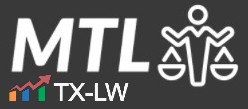Business transactions can be structured in any number of ways. Those who are tax savvy can structure their transactions to minimize and even avoid paying taxes.
There are tax provisions that specifically allow for tax savings. To achieve the tax savings, one only has to structure the transaction to meet the requirements of the statute. Then there are also unintended consequences of various tax laws and rules that can allow for tax savings. With the later, they also require structuring transactions to comply with the tax laws. The difference is that the latter options typically involve a fact pattern that is not contemplated by the tax law–a gap in the law, if you will–or a reading or combination of the tax law given unique circumstances that leads to a favorable tax outcome.
The IRS and Congress often react to taxpayers whose transactions produce tax savings that are not per se intended or expressly apparent. It is usually the IRS that raises the issue, the issue ends up in court, and then Congress acts to either affirm or reject the court decision. When Congress acts, it enacts statutes.
In this article we’ll consider Section 483 of the tax code. This provision was added by Congress to limit taxpayer’s ability to have interest, which is taxed at ordinary tax rates, to qualify for lower capital gains tax rates. The law enacted by Congress provides several “outs” that allow for this treatment and includes language that is not all that clear that might allow other “outs.” The Third Circuit’s decision in Trust Under the Trust of Charles G. Berwind Trust v. Commissioner, No. 24-2360 (3d Cir. Oct. 30, 2025), provides an opportunity consider this issue.
Contents
Facts & Procedural History
This case involves one of several trusts established to hold interests in a closely held coal mining business. Only two trusts remained as shareholders. Over time, the trust consolidated their ownership and transferred interests to related entities.
The trust held a minority ownership interest in a subsidiary that owned a pharmaceutical coatings company. Beginning in the 1990s, the of the trusts sought to acquire the other trusts ownership stake in the subsidiary. After the owning trust rejected multiple purchase offers, the situation escalated.
In 1999, the business and a newly formed parent company executed a short-form merger under Pennsylvania law. This type of merger allowed a parent corporation owning at least 80% of a subsidiary to merge without a vote by minority shareholders. The merger agreement provided that the the owning trust’s common stock would be “converted into the right to receive a subordinated promissory note” valued at $82,820,000, due in 2001, with 10% interest.
The owning trust filed a lawsuit in 1999 challenging the merger. The lawsuit included claims that the merger violated Pennsylvania law and the subsidiary’s articles of incorporation. It also included a demand for statutory appraisal under Pennsylvania’s dissenters’ rights provisions. The parties engaged in litigation for nearly three years.
In 2002, the parties reached a settlement. The settlement agreement required the owing trust to deliver its subsidiary stock certificates and dismiss the lawsuit. In exchange, the subsidiary agreed to pay the owningn trust $191 million. The payment was made in 2002.
The parties disagreed about the tax treatment of this payment. The subsidary took the position that the payment was made under the 1999 merger agreement. This meant that Section 483 required a portion of the $191 million to be treated as interest taxable at ordinary income rates. The owning trust took the position that the payment was made under the 2002 settlement agreement. This meant that no portion would be characterized as interest and the entire amount would be taxed as capital gains.
The IRS audited both parties’ income tax returns and issued deficiency notices. The deficiency notice sent to the owing trust determined that approximately $31 million of the settlement payment represented unstated interest income taxable as ordinary income. The owning trust filed a petition in the U.S. Tax Court for redetermination of the deficiency. After a trial in 2016, the tax court ruled for the IRS in December 2023. The owning trust appealed to the Third Circuit.
Interest Under Section 483
Before Congress enacted Section 483 in 1964, taxpayers could structure sales of items that are not inventory to convert ordinary income into capital gains. Here’s how it worked: A seller would agree to sell property for payments over time. The contract would specify the total amount to be paid but would not provide for interest. The deferred payment amount would be larger than if payment were made immediately. This larger amount reflected the time value of money–i.e., baked in interest. But because the contract didn’t explicitly identify “interest,” the entire payment was treated as capital gains to the seller rather than interest.
The tax advantage was substantial. Ordinary income is taxed at higher tax rates than capital gains–as it is today. A seller could effectively receive interest on the deferred payment while having that interest taxed at the lower capital gains rate. This was particularly attractive for sales of appreciated property where the seller already expected capital gains treatment on the base sale price.
Congress enacted Section 483 to eliminate this tax planning strategy. The legislative history explains that Congress “intended primarily to prevent taxpayers from converting ordinary income to capital gain” when “the dollar amount of the deferred payments was larger than it would have been had payment been made immediately.” This ensures that taxpayers don’t avoid income taxes by structuring installment contracts to provide only for payment of principal without charging and collecting interest.
Section 483 Versus Section 7872
Before getting into Section 483 and this case, we should pause to consider Section 7872. Section 483 should not be confused with Section 7872, another interest imputation provision in the tax code.
Section 7872 applies to below-market loans between related parties such as gift loans, employer-employee loans, and corporation-shareholder loans. That provision treats the forgone interest as transferred from lender to borrower and then retransferred back as interest income to the lender. Section 483 does not involve gift loans or shareholder loans–and, importantly, does not involve the sale of property.
The difference matters because taxpayers might try to characterize a deferred payment sale as a loan to avoid Section 483. For example, a seller might claim they sold property for a promissory note at face value and then “loaned” the buyer the funds. This doesn’t work. When the transaction is actually a sale with deferred payments, Section 483 applies regardless of loan-like terminology. If there is no sale and the party is just a lender, then Section 7872 rather than Section 483 applies to impute interest on the transaction.
Section 483 and Imputed Interest
With that distinction, we can address Section 483. Section 483 imputes interest to certain deferred payments for property sales. The statute sets out specific conditions that must all be met before interest imputation applies. All four have to be met for interest to apply.
The first requirement is that there must be a payment “under any contract for the sale or exchange of any property.” This language requires both a contract and a sale of property. We will address this requirement more below.
The second requirement is that the payment must be made “on account of the sale or exchange of property” and must “constitute part or all of the sales price.” Additionally, the payment must be “due more than 6 months after the date of such sale or exchange.”
The third requirement is that “some or all of the payments” under the contract must be “due more than 1 year after the date of the sale or exchange.” This ensures that Section 483 only applies when there is a meaningful deferral period. It also provides an easy out to avoid Section 483.
The fourth requirement is that there must be “total unstated interest” under the contract as measured against rates determined by the IRS. This requires a time-value-of-money present value analysis of the payments over the payment period. The formula compares the stated payments under the contract to what the payments would be if they included interest at the applicable federal rate. The difference represents unstated interest that is recognized as interest taxed as ordinary income rather than capital gains.
What Does the Term “Contract” Mean?
This case gets into the first reqirement from above, i.e., the contract requirement. The issue in the case is what counts as a “contract” in the context of a buy out agreement by a subsidiary and a parent entity that was formed by the subsidary as to the minority shareholder of the subsidary?
The owning trust in this case argued that the 1999 merger agreement was not a “contract” for purposes of Section 483. The trust emphasized that it never consented to the merger. As a minority shareholder, it had no vote on the short-form merger under Pennsylvania law. The owning trust contended that without its assent, there could be no contract for the sale of its property.
The Third Circuit rejected this argument. The merger agreement was executed by the subsidiary and its new parent entity. Both corporations’ boards of directors approved the agreement. The merger became effective when the articles of merger were filed with the Pennsylvania Secretary of State in 1999. At that time, the merger agreement effected the sale of the owning trust’s shares and mandated payment in exchange. Thus, according to the appellate court, this enforceable agreement constituted a contract even though the owning trust didn’t assent to it.
The owning trust relied heavily on the Ninth Circuit’s decision in Tribune Publishing Co. v. United States, 836 F.2d 1176 (9th Cir. 1988). In that case, Tribune sued Boise Cascade over a 1969 merger and settled in 1977. The Ninth Circuit concluded that Section 483 didn’t apply to the 1977 settlement payment. The court stated that “Tribune did not voluntarily contract to exchange its Newsprint stock for Boise Cascade stock plus [the settlement proceeds].”
The Third Circuit distinguished Tribune. The Ninth Circuit was simply saying that the parties in that case didn’t contract in 1969 to exchange stock for Boise Cascade stock in 1969 plus settlement proceeds in 1977. The holding didn’t turn on whether the sale was voluntary. Rather, it addressed which agreement the payment was made under. The payment in Tribune wasn’t under the original merger agreement because that agreement didn’t contemplate the later settlement payment.
What Agreement Applies?
Having determined that the sale occurred in 1999, the court turned to the question of which agreement the $191 million payment was made “under. The IRS contended that the payment was made under the 1999 merger agreement.
The court started its analysis with what the word “under” means. Courts have examined similar uses of “under” in other statutes. When an action is said to be taken “under” a provision of law or legal document, what is generally meant is that the action is “authorized” by that provision or document. The Supreme Court has noted that “under” in the legal context “identifies the provision that served as the basis for the” conduct in question. Applying this definition means requires on to examine which agreement created the obligation to pay. Which agreement served as the basis for the payment? Which agreement authorized the sale that gave rise to the payment obligation?
The owning trust argued that the payment was made under the 2002 settlement agreement because that agreement explicitly mandated the $191 million payment. Adopting this narrow interpretation would allow taxpayers to evade Section 483 simply by creating two contracts. The first contract would sell the property but leave the payment terms undefined. The second contract would define the payment terms without explicitly referencing the sale. In that situation, the payment would technically be under a contract for payment rather than under a contract for sale.
The Third Circuit agreed with the IRS. The merger agreement served as the basis for the payment because it was the instrument that effected the sale and created the parent entity’s obligation to pay for the shares. When the parent filed the articles of merger in 1999, the owning trust’s shares were extinguished. At that moment, the new parent entity incurred its obligation to compensate the owning trust for its shares. The 1999 sale created the payment obligation.
The court said that the 2002 settlement agreement, by contrast, didn’t create the obligation to pay. The settlement agreement explicitly stated that there was an ongoing dispute about when the shares were sold. The agreement took pains to specify that it didn’t constitute an agreement to sell the owning trust’s shares. Pennsylvania law had already resolved that question. The merger gave the agreement full effect in 1999.
The Takeaway
The Third Circuit’s decision in this case shows that economic substance applies for Section 483 rather than how parties label their agreements. Taxpayers cannot avoid the interest imputation rules by using multiple contracts or settlement agreements to obscure when a sale occurred. Corporate mergers effect sales when they become legally effective under state law. Litigation and settlements don’t change the original sale date. This means taxpayers have to structure deferred payment transactions correctly from the start. Any sale where payment is deferred more than a year likely triggers Section 483 unless the contract explicitly provides for interest at market rates. The IRS might scritinize transactions that do not meet this requirement and may look through later agreements to find the contract that authorized the sale.
Watch Our Free On-Demand Webinar
In 40 minutes, we'll teach you how to survive an IRS audit.
We'll explain how the IRS conducts audits and how to manage and close the audit.


